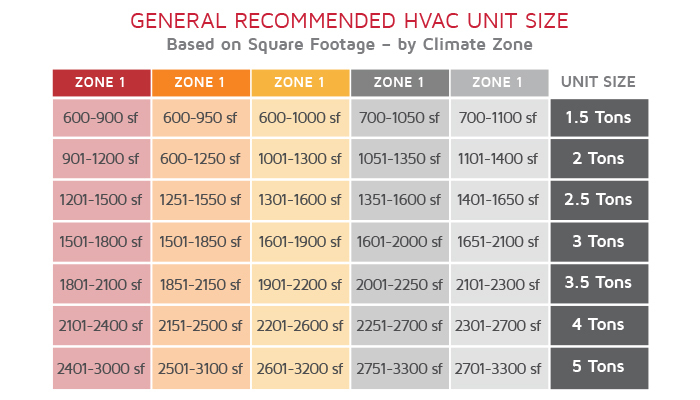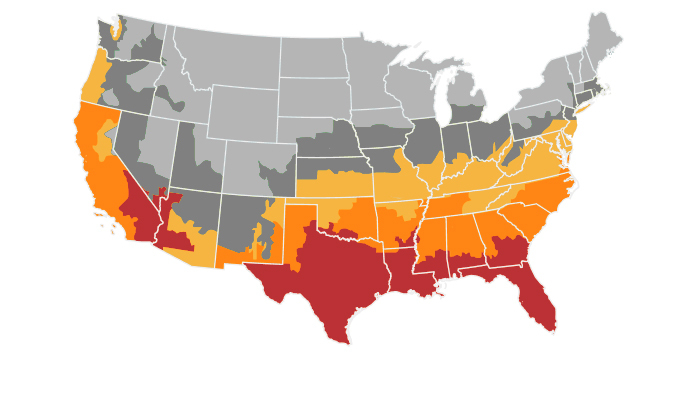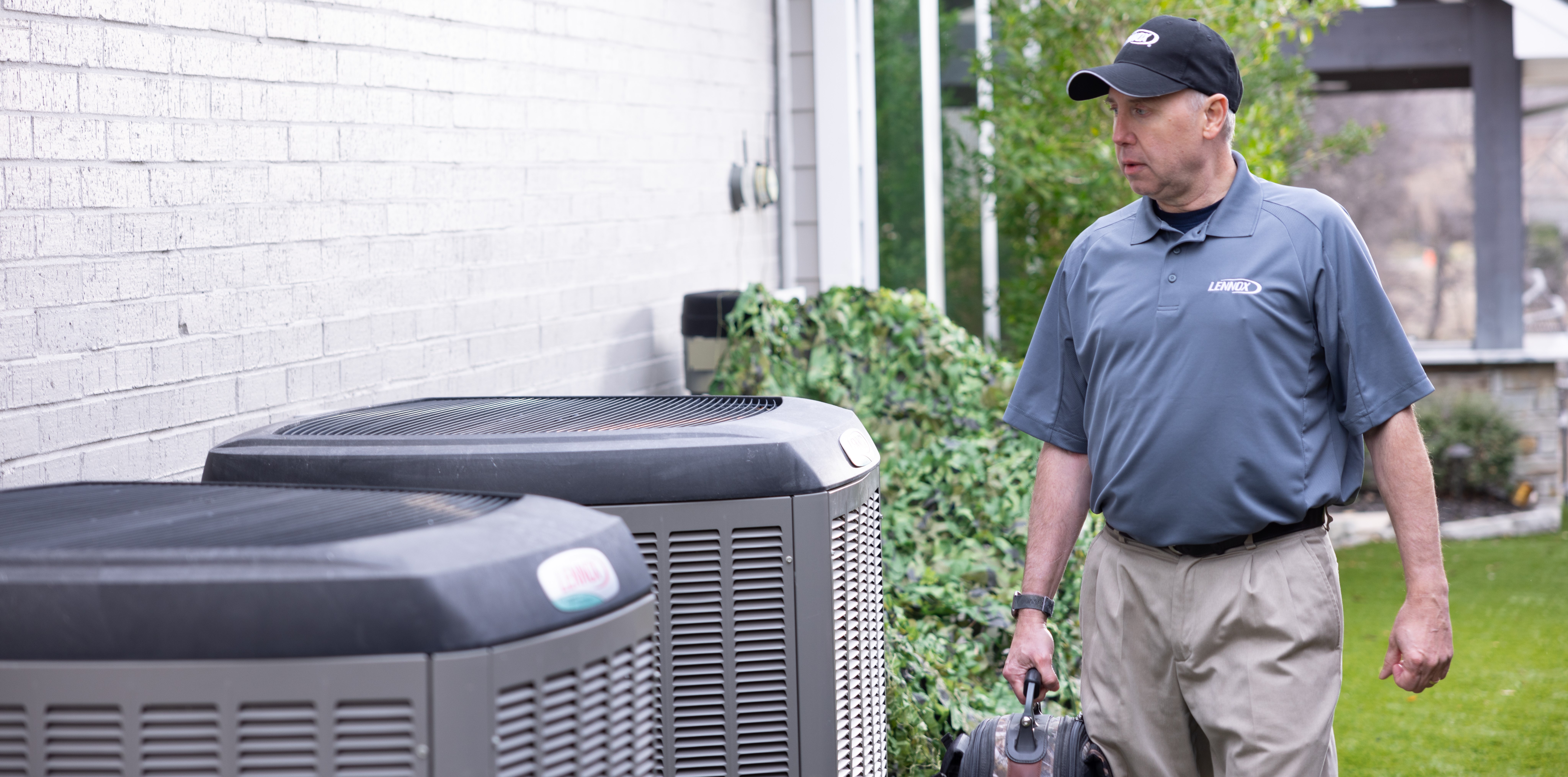Why HVAC unit size matters
Choosing the right size HVAC unit for your home can have a large impact on year-round comfort, energy efficiency, and the lifespan of your equipment. There is a process to determining the proper unit size for your space – and bigger isn’t always better. There are drawbacks to installing an improperly sized system – whether it’s too large or too small.
Too small
An air conditioner that’s too small can lead to overworked equipment that runs constantly, raising your utility bills and rarely reaching or maintaining desired indoor temperatures. Along with higher energy costs, an undersized system can also cause uneven cooling throughout your home.
Too large
While an oversized system will reach desired indoor temperatures quickly, this causes them to cycle on and off frequently. Repeating this cycle too often wastes energy and causes undue wear and tear on the unit. This can lead to a shortened equipment lifespan and higher maintenance costs. Plus, with air flow happening for only part of the day, humidity can rise making the home uncomfortable and possibly leading to harmful conditions like mold or mildew build-up.
Choosing the right system for your home
Step 1: Determine the type of HVAC system that best fits your home
There are three primary types of HVAC systems: split-system, ductless and packaged units.
Split-system Air Conditioners
The most common of the three, a split-system is an outdoor air conditioner or heat pump and an indoor furnace or air handler combo. The indoor and outdoor components work together to control the temperature and humidity levels within your home. A split-system provides a good balance of efficiency, budget, and low noise level.
Ductless Systems
A ductless system, often called a mini-split, consists of a single outdoor unit directly connected to one or more indoor units that distribute air throughout the home. Ductless systems require minimal modifications to your space to install and are often used to cool single rooms or small spaces. They can also be installed using multiple independent indoor units for environments where different temperatures are desired in different spaces.
Packaged Units
Packaged unit systems consist of a single outdoor unit that incorporates all of the mechanical components in one. A packaged system connects directly to your home’s ductwork, distributing heated and cooled air directly. Packaged units are great for homes with limited interior space or that lack the attic or basement typically needed for a furnace or air handler.
Step 2: Review ratings for the HVAC type you need
Before determining the specific system size that works for you, it’s good to learn about the efficiency and cooling capacity ratings associated with type is system you plan to install. Understanding Seasonal Energy Efficiency Ratio (SEER2) and capacity ratings - measured in tons or BTUh (British Thermal Units per hour) - can help you make a more educated purchasing decision.
What is a SEER2 rating?
A SEER2 ratio is a calculation used to measure the energy efficiency of a specific HVAC system. A unit’s SEER2 rating is reached by dividing its cooling output (over an average cooling season) by the total amount of energy used. The final number reflects a systems maximum efficiency rating under ideal conditions. Systems that use energy more efficiently have a higher SEER2 ratio. Most common systems have a rating between 14 and 16 SEER2, while more expensive, high-efficiency systems can have ratings as high as 22 SEER2.
What is a tonnage/BTUh rating?
Tonnage or BTUh ratings indicate the amount of energy it takes an air conditioner or HVAC system to remove heat from a home in a 1-hour period. Home air conditioners are typically rated in tons, but different manufacturers may rely on one or the other, tons or BTUh to rate their systems. A 1-ton rating is equal to a 12,000 BTUh rating. Ratings typically break at 0.5-ton points creating a 1.5, 2, 2.5, 3, and so on rating scale. Choosing the right system depends on the square footage of your home and the climate where you live. The larger your home, the higher capacity rating you will need.
Step 3: Determine the right unit size for your home
While choosing a unit’s efficiency ratings is an important part of identifying the right air conditioner for you, there are many factors that play a role in determining ideal unit capacity. Among them, the square footage of your space and the climate zone you live in are the primary considerations.
Multiply your homes total square footage by 20 to determine the BTUh rating you will need to cool your entire home. Divide the BTUh number by 12,000 to get the proper ton rating.


While this basic calculation can give you a rough idea of the air conditioner size that’s right for your home, we strongly recommend against relying solely on a square footage calculation. There are many other factors that can affect the true BTUh rating of your home. We suggest scheduling a professional energy audit or dealer assessment to ensure you get the most from your HVAC purchase.
Step 4: Request an energy audit and a Manual J calculation
The information gathered in a professional energy audit will go a long way toward optimizing the efficiency of your system, maintaining year-round comfort for you and your family, and maximizing the lifespan of the system you choose.
A Manual J calculation, the standard BTUh assessment used across the industry, is the most precise measurement available for home HVAC capacity. In addition to square footage, the Manual J process takes a number of factors into account, such as:
- Climate zone
- Ductwork
- Number and style of windows
- Natural shade or sun exposure
- Quality and amount of insulation
- Number of people using the space
- Heat-generating appliances
Many utility companies offer Manual J audits and reports for free. If yours doesn’t, you can hire an HVAC dealer or energy auditor to perform your inspection.
Visit the energy.gov website to learn more about home energy assessments.
Step 5: Choose a qualified installation professional
Now that you’ve determined the right air conditioner size for your home and identified the system that’s right for you, it’s time to think about installation. Locate a Lennox dealer near you and get started today!

